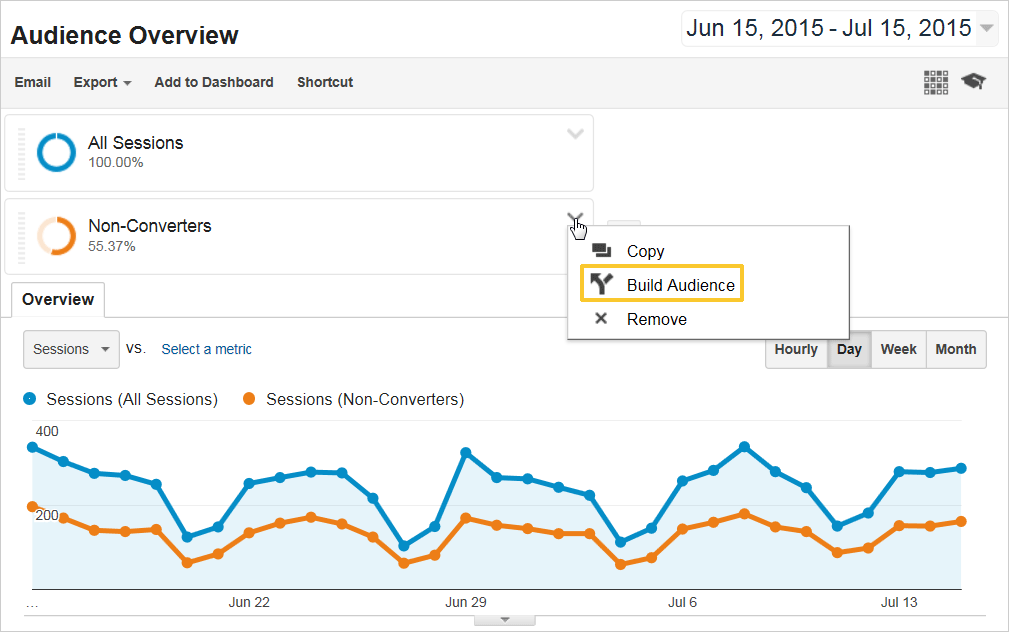Optimize Your ROI With Remarketing in Google Analytics
In the realm of digital advertising, the application of remarketing strategies within Google Analytics has verified to be a powerful tool for improving return on investment. By utilizing the power of individual data and tailoring advertisements to details target market sections, services can substantially intensify their conversion prices. The actual crucial lies in the art of precision - understanding individual behavior, crafting engaging ads, and continuously refining approaches to drive optimum outcomes. The journey to optimizing ROI with remarketing is a nuanced path led with understandings and chances that can reshape the trajectory of your advertising and marketing undertakings.
Comprehending Remarketing in Google Analytics
Understanding remarketing in Google Analytics is essential for enhancing your digital advertising strategy. Remarketing enables you to target users who have actually previously seen your web site or engaged with your app, providing them with tailored ads as they browse various other sites or make use of other applications within the Google Show Network. This strategy aids maintain your brand name top of mind and motivates individuals to go back to your site, inevitably enhancing the chance of conversion.
By utilizing Google Analytics, you can track the efficiency of your remarketing projects, gaining important understandings right into customer behavior, engagement, and conversions. This data allows you to improve your targeting, messaging, and bidding strategies to enhance the general performance of your projects.
Furthermore, understanding the different sorts of remarketing lists available in Google Analytics, such as basic, dynamic, and similar audiences, permits you to develop highly segmented and individualized projects tailored to specific customer sectors. This degree of granularity can significantly boost the relevance and impact of your remarketing efforts, ultimately maximizing your return on financial investment.
Establishing Remarketing Listings
To successfully execute remarketing campaigns in Google Analytics, the first action includes setting up and developing remarketing checklists targeting certain individual segments based upon their interactions with your website or application. By establishing remarketing checklists, you can customize your advertising efforts to get to users that have currently revealed interest in your solutions or products.
To begin, navigate to the Admin section of your Google Analytics account and pick the Property where you intend to create the remarketing list. After that, under the Home column, click on 'Audience Definitions' and select 'Audiences.' Next off, click on the red 'New Audience' switch and select 'Develop New' to define the specifications for your remarketing list.

Crafting Efficient Remarketing Advertisements

When crafting your advertisements, concentrate on producing eye-catching headlines and compelling visuals that stick out to potential clients. Integrate solid calls-to-action that encourage individuals to revisit your site and complete a desired activity. Make use of dynamic remarketing to reveal tailored ads including items or services that individuals have actually formerly seen on your site.
Furthermore, make sure that your ads are mobile-friendly because a considerable part of web traffic comes from mobile phones. Examination various ad variations to identify which layouts and messages drive the most effective results. By continuously refining and maximizing your remarketing advertisements based upon performance data, you can optimize their efficiency and improve your return on investment.
Studying Remarketing Efficiency

Via Google Analytics, marketing professionals can track the performance of their remarketing projects in real-time, enabling them to identify patterns, patterns, and areas for enhancement promptly. By assessing the data, marketing experts can figure out which ads are doing well, which audience sectors are responding positively, and which channels are driving the most conversions. This level of granularity makes it possible for marketing professionals to make data-driven choices to optimize their remarketing projects for much better results.
Maximizing ROI With Remarketing
Analyzing remarketing information in Google Analytics makes it possible for marketing experts to pinpoint opportunities for maximizing return on financial investment (ROI) through critical modifications - What Is “Remarketing” In Google Analytics?. To optimize ROI with learn this here now remarketing, it is important to recognize the actions of your audience. By evaluating individual communications, such as the web pages they visited, the products they checked out, or the activities they tackled your website, you can customize your remarketing campaigns much more successfully
Segmenting your target market based upon their actions permits you to develop personalized and targeted ads that are more probable to reverberate with them. By revealing pertinent advertisements to details segments of your audience, you can increase the chances of conversion and ultimately improve your ROI.
Furthermore, evaluating different ad creatives, messaging, and offers can aid recognize what reverberates ideal with your target market. A/B screening enables you to explore various aspects of your advertisements to identify what drives the highest possible engagement and conversion rates.
Verdict
To conclude, taking full advantage of ROI with remarketing in Google Analytics requires a strategic approach to assessing customer actions, segmenting audiences, creating tailored advertisements, and maximizing campaign performance. By leveraging data-driven insights and examining various methods, companies can enhance their remarketing efforts to drive greater engagement and conversion prices. This methodical technique guarantees that resources are efficiently alloted in the direction of making best use of returns on financial investment in remarketing campaigns.
Next, click on the red 'New Target market' switch and choose 'Produce New' to define the criteria for your remarketing checklist.
By constantly refining and optimizing your remarketing advertisements based on performance information, you can maximize their effectiveness and enhance your return on investment.
By diving right into these understandings, marketing click here for info professionals can gain a thorough understanding of exactly how their remarketing efforts are reverberating with their target audience and driving conversions. To optimize ROI with remarketing, it is crucial to understand the actions of your audience.In conclusion, optimizing ROI with remarketing in Google Analytics requires a critical strategy to examining user habits, segmenting target markets, creating tailored advertisements, and optimizing campaign efficiency.